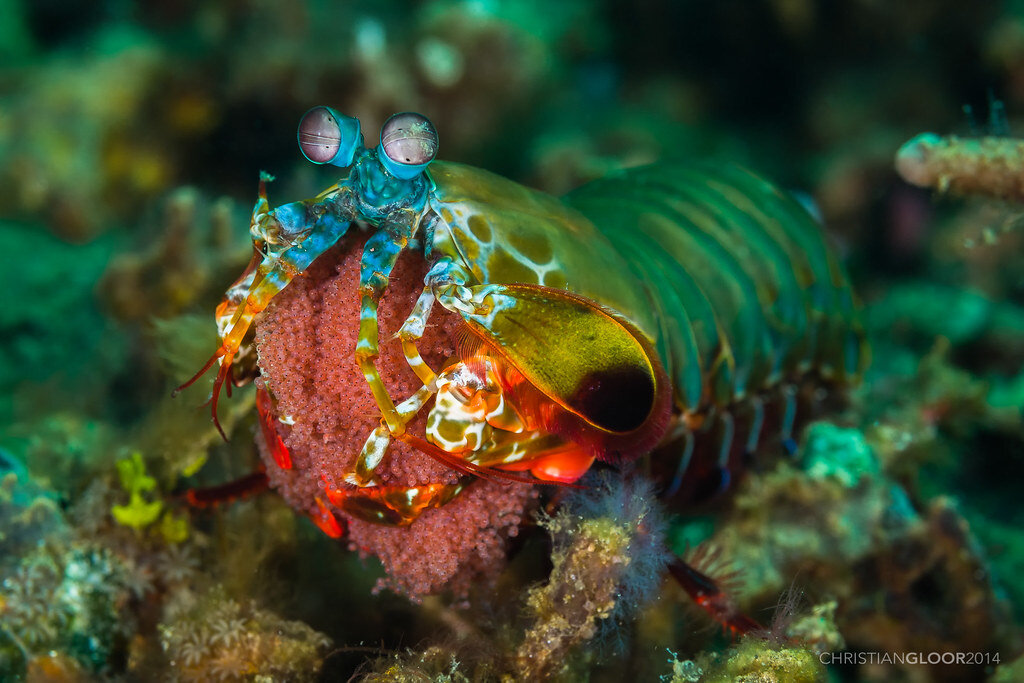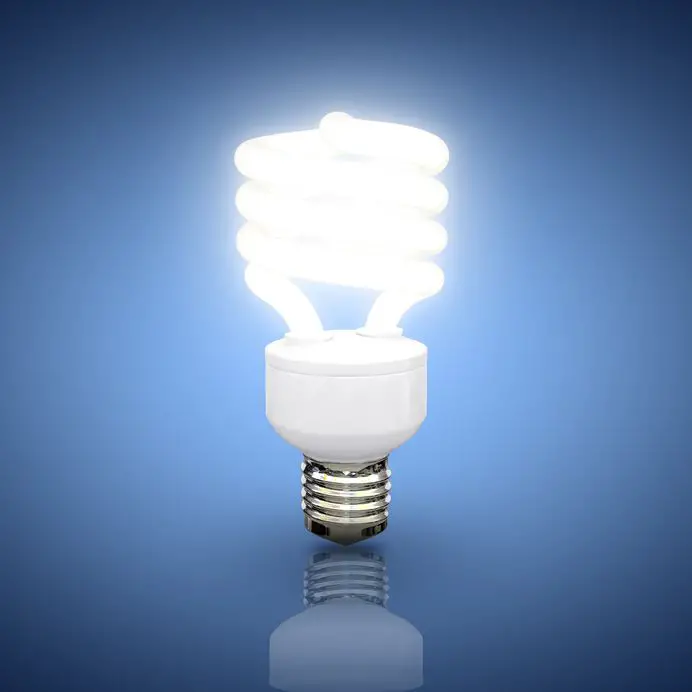15 Animals That Glow In The Dark
The animal kingdom is a unique and diverse place with many different animals capable of many different things. Here we are going to look at 15 animals with the ability naturally to glow in the dark.
Contents
Firefly Squid

While most squids don’t glow there are a few species of them that do. The most known glowing squid is called the “firefly squid“. The firefly squid gets its name from its flashing lights which resemble the glow of fireflies.
It is able to glow like this due to a light-producing organ called “photophores“ which can be found all over the squid’s body. The squid has full control of these lights, meaning that it can alternate the pattern of its light in any desired way.
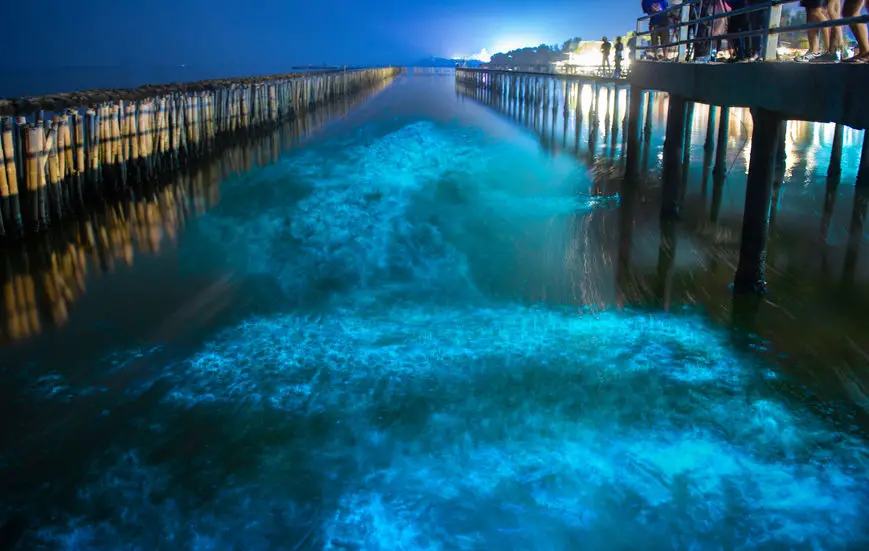
These lights are thought to have several biological functions such as to communicate with potential mates or rivals. They may also be using this ability as a form of disguise from larger predators in such a way that allows them to escape possibly lethal situations.
This squid is rather small and only grows to be about 7 centimetres (3 inches) long and is mostly found in the western Pacific Ocean at depths of around 180-365 meters (600 to 1200 feet).
The firefly squid has gained a lot of popularity within Japan. This is mostly due to the spectacle that happens every year when these animals collect at the coast of Japan to give birth to their younglings, causing a light show to remember.
They are also considered a delicacy in Japan which causes them to also be fished in large quantities in this period.
Sea Turtles

Reptiles are normally not very prone to showing any sort of signs of glowing abilities however scientists have observed the hawksbill sea turtle to have such abilities.
This turtle makes use of a phenomenon known as biofluorescence, which is the ability to absorb light and re-emit it at a higher wavelength. This most commonly occurs in the form of transforming blue light and re-emitting it as red, orange or green.
The advantage of this ability for this turtle is the fact that it helps them camouflage with the environment. This is because in the areas these turtles live there are a lot of fluorescent reefs, meaning that the glow from the turtle blends in with the reef seamlessly.
Catshark
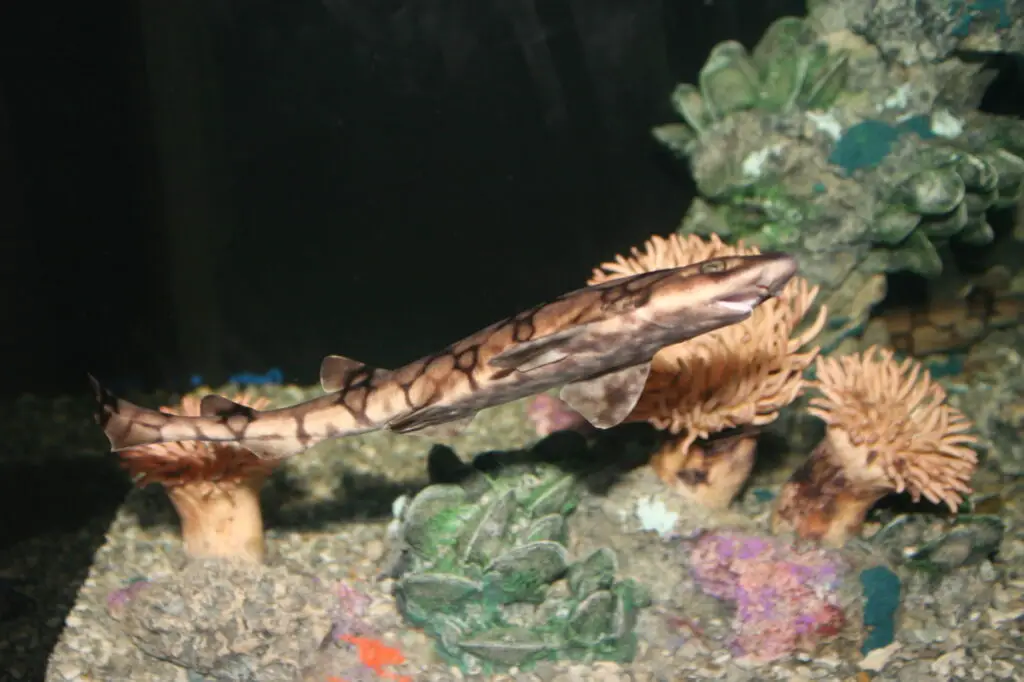
Outside the coasts of the US there are species of catshark with the ability to glow. These sharks mostly use their fluorescent abilities to communicate with eachother and to camouflage in reefs much like the sea turtle.
While their general glow is very apparent it wasn’t always apparent that they use it for communicative purposes. This was only discovered when scientists shined a specific light on them which revealed this property of theirs.
The catshark grow to be around 3 feet (90 cm) long and spend a lot of their time on the bottom of the ocean floor hiding in crevices.
Jellyfish
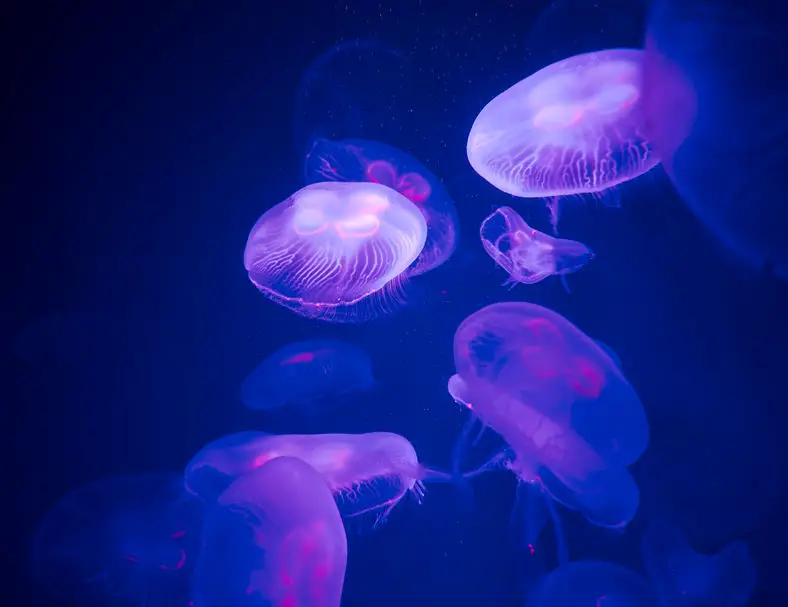
Jellyfish as a species are some of the most luminescent animals on this planet. It is estimated that around 50% of them are bioluminescent.
Bioluminescence is different from biofluorescence in the nature the light emitted is created. Bioluminescence light is created directly from a chemical reaction occurring within the animal whereas biofluorescence requires the absorption of light to then re-emit it.
If you are further interested in the amazing world of bioluminescence we recommend you head to our article 10 Interesting Facts About Bioluminescence.
These bioluminescent jellyfish can be found all around the world’s oceans due to their widespread within them. While they are spread across the entire world they mostly reside in the deeper parts of the water due to it being the most effective at greater depths.
The main use of their bioluminescent abilities is for the defense against the various predators they might run into.
Some jellyfish will use bright flashes to startle and confuse predators whereas others are able to detach their own tentacles as a means to confuse them, effectively acting as a decoy. The different strategies the jellyfish uses regarding their bioluminescence is rather diverse and creative.
Glow worms

While most worms are not capable of bioluminescence there are a few species of them that do, which are more commonly referred to as “glow worms”.
These worms mostly reside in dark and humid environments. They are most commonly found within various caves with these requirements met. They are also found in crevices that also meet these requirements such as in holes next to bodies of water or waterfalls.
The evolutionary advantage for the glow worms to glow the way they do is that the glow attracts insects towards the sticky threads they leave. This effectively works as spider web but with the addition of their glowing functionality.
Cockroaches

The lucihormetica luckae is a species of cockroach which has the ability to produce its own light. These cockroaches have been found mostly in rainforests around an active volcano in Ecuador.
The use of bioluminescence for these insects is rather interesting as it is rather unique. These cockroaches use it in order to mimic the bioluminescent click beetle that lives in the same area. This is because the click beetles glow is supposed to warn predators of its toxicity, making it a viable strategy for the cockroach to evolve to possess a similar glow.
This ability is however a double-edged sword since there are still predators that ignore this warning sign and still end up preying on them.
Fireflies

Fireflies are some of the most known bioluminescent animals on the planet, mostly due to their ability of fully lighting up a night in a way that almost appears magical.
Fireflies are biologically very similar to glow worms. In fact they are essentially the same with the exception of fireflies possessing wings which allow them to fly around us the way we are used to.
This also means that they prefer to live in similar climates to the glow worms. They prefer areas with as much moisture as possible and mostly reside in Asia or America.
The fireflies mostly use their bioluminescence as a way to help them find mates. Much like other animals with bioluminescent abilities they also use it as a measure of evasiveness against predators.
One interesting thing to note about them is the fact that scientists to this day are still not quite sure how they regulate their different light outputs. The process of their light production happens on a chemical level but is controlled by them in a way we are not sure of currently.
Mantis Shrimp
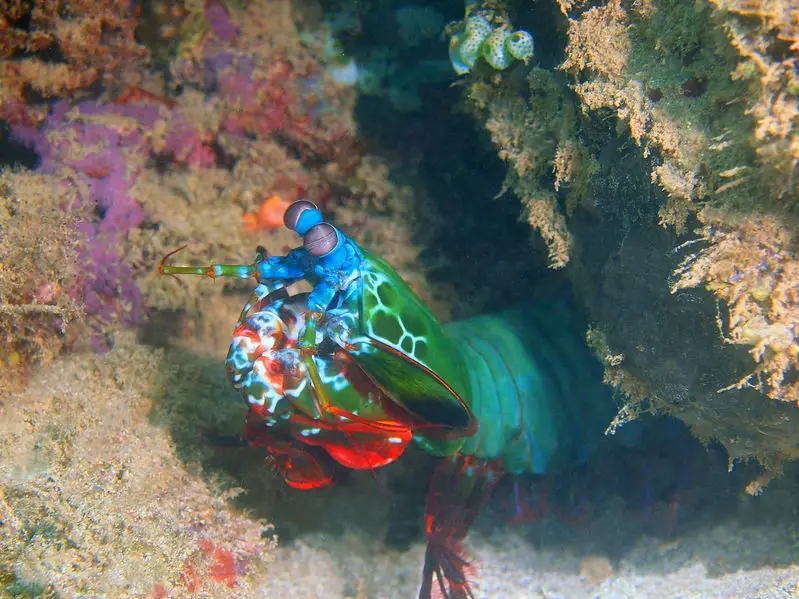
The mantis shrimp is a crustacean that grows up to 7 inches long (~18cm) and mostly resides in the reefs of the Indian and Pacific oceans at depths of around 1500 meters. The mantis shrimp also have claws strong enough to stun prey up to 200lbs (91kg).
The mantis shrimp also have fluorescent abilities much like all other animals on this list. Their fluorescence is important for their mating rituals in which they are used to find potential mates.
However their way of doing this is rather unique. They fluoresce in wavelengths of light that we or other animals that aren’t the mantis shrimp can see. The reason for this is because it allows them to stay hidden from predators while still being able to find eachother effectively.
They do this by matching the emitted wavelengths of light to specific wavelengths that only the mantis shrimp sees. This is possible because of the shrimp’s advanced vision.
This is in fact what the mantis shrimp is most famous for. Their strongest attribute is having the most advanced eyesight and colour vision we currently know of. For more information about the mantis shrimps advanced eyes and vision we suggest you go to our article about it here.
Cats

While most cats don’t glow at all there are actually some instances in which they do. This is mainly due to a genetic modification that has been done to them with the intended purpose of helping them resist feline Aids (FIV).
In the process of doing this, they also inserted a gene that produces a fluorescent protein called GFP, which is what gives these cats their glow.
This did in fact cause a decrease in the replication of the FIV virus among these modified cats.
Anglerfish
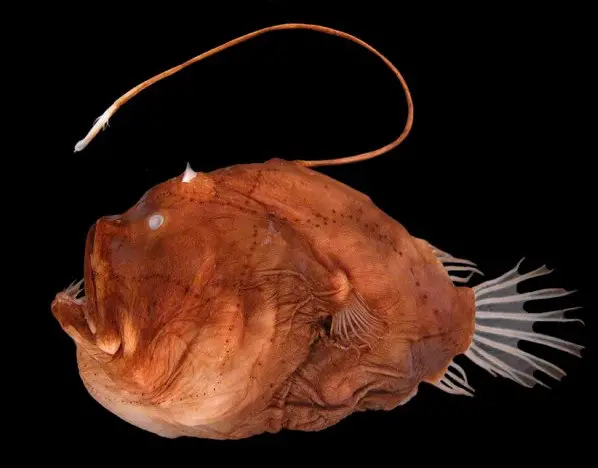
If you have ever seen the Disney movie Finding Nemo you are almost guaranteed to have rather strong memories of this type of fish. While they never made the name clear in the movie this fish is called the anglerfish.
Like demonstrated in the movie they have an extended dorsal fin on the top of their body that is able to light up to act as a lure for their prey at deeper ocean depths. This works because almost all animals are naturally drawn to light, with marine life being no exception.
This lure functions due to a bioluminescent bacteria that live inside the anglerfish.
One interesting thing to note about them is that only the females possess the glowing dorsal fin. The reason for this is similar to a lot of biological evolution, they simply don’t need it so they have evolved to not have one.
Millipedes

Among all different kinds of millipedes around the world there is a genus of them known as Motyxia. These millipedes all have bioluminescent abilities, meaning that they are all capable of glowing in the dark.
The motyxia are found only in certain regions of California and grow to be around 3-4 cm (1/8 inch) in length.
One interesting thing to note about these millipedes is that they don’t have any particular organ for light production like some other animals have. Instead their luminescence is created by a biochemical process that happens within its exoskeleton.
Tomopteris

The tomopteris is a genus of plankton that grows to be around 20 millimetres (0.79 in) to 40 millimetres (1.6 in) in length.
These plankton are a bit special though due to their bioluminescent abilities. This plankton in particular have been observed to emit a yellow bioluminescent light, which among marine life is rather rare.
The purpose of the bioluminescent abilities for these krill are believed to be mainly as a distraction measure against its predators.
Krill

Krill are rather small crustaceans who grow to be anywhere from 8 to 60 mm (about 1/4 to 2 inches). There are several different kinds of krill who all live in different regions all around the world’s oceans.
Most species of krill possess bioluminescent abilities in the form of photophores in the same way the firefly squid does. This allows them to glow at night.
Viperfish

The viperfish is an oblong fish that grows to be around 30 to 60 cm (12 to 23.5 in) long and is famous for having very long pointy teeth and a hinged lower jaw.
These fish are believed to make use of bioluminescence in a similar way to the anglerfish in which they produce light in order to lure their prey in.
They produce their light in the same way that the firefly squid does, by making use of photophores that are scattered across its body.
Our combined knowledge about these fish however is rather low due to their natural occurring residencies being hard to access for us humans. They have been observed to live at depths of around 1000-4000 meters deep but no conclusive data has yet to be found.
Humans

While this is rather unexpected it turns out that through some research scientists have managed to conclude that humans actually are bioluminescent. However we are not bioluminescent in the more conventional way that is present among other animals.
The bioluminescent light humans emit is very subtle in comparison to other animals with a very clear glow. In fact you need a superhuman vision in order to spot this since it is usually not visible to the naked eye.
The only reason we know of this information in the first place is because when scientists were experimenting with it they had to use an incredibly sensitive camera in order to capture an image of it.
One additional interesting thing about this fact is that it was before this thought that it was impossible to capture an image like this. It was thought that it was impossible to take a picture of something so miniscule that we were not even sure existed.
However they managed to do it with the help of a CCD (charge-coupled device) camera. This is a camera that is sensitive to photon particles, which are the particles of light. Using a sensitive camera of this type they managed to capture the small amount of light humans emit.

